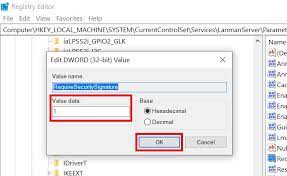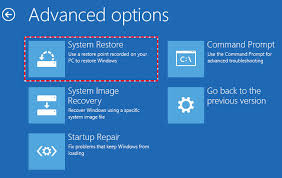7 Solutions to the Windows 10 Cannot Access Linux Files Problem

7 Solutions to the Windows 10 Cannot Access Linux Files Problem
If you’re running into the “cannot access Linux files from Windows 10” problem, there are a few potential solutions. First, make sure that the Windows 10 machine can see the Linux machine on the network- go to Network in File Explorer and see if it’s listed there. If it is, try opening up the share in question and seeing if you have read/write permissions. If not, you may need to adjust your sharing settings on the Linux machine.
If that doesn’t work, another potential solution is to install Samba on the Linux machine and configure it accordingly. This will allow Windows 10 to access files stored on the Linux machine. Once Samba is installed, open up File Explorer and type in “\\ \ “. This should bring up a list of shares on the Linux machine that you can access.
If you’re still having trouble, another solution is to create a shared folder on the Windows 10 machine and then mount that folder on the Linux machine. To do this, open up File Explorer and find the folder you want to share. Right-click on it and select Properties, then go to the Sharing tab. Click “Share” and then choose who you want to be able to access the folder- make sure Read/Write is selected! Once that’s done, open up a Terminal window on the Linux machine and type “mount -t CIFS // /share name -o username=windowsusername”. This will mount the
GCC windows
If you’re using Windows 10 and you can’t access your Linux files, there are a few possible solutions.
1. Check your file permissions: In order to access your Linux files from Windows, you need to have the correct permissions set. You can check your file permissions by right-clicking on the file or folder in question and selecting “Properties.” If you don’t see the “Permissions” tab, it means you don’t have the correct permissions set.
2. Use the Linux subsystem for Windows: The LinuxSubsystem for Windows allows you to run a full Linux environment within Windows. This means you can access your Linux files from within Windows without any additional software. To install the Linux subsystem for Windows, follow these instructions.
3. Use a Virtual Machine: If you don’t want to install the Linux subsystem for Windows, you can use a virtual machine instead. A virtual machine will allow you to run a separate instance of Windows (or any other operating system) within your existing instance of Windows. This is a bit more complex than using the Linux subsystem for Windows, but it’s still fairly easy to set up. We recommend using VirtualBox for this purpose.
4. Use SSH: If you’re comfortable using the command line, you can access your Linux files over an SSH connection. This is typically only used by more advanced users, but it’s a good option if you’re already familiar with SSH.
wine windows

If you’re a Windows 10 user trying to access your Linux files, you may have come across the “Windows cannot access Linux files” error. This can be frustrating, but there are a few potential solutions.
1. Check Your File Paths
First, check that you’re using the correct file paths. If you’re not sure what the path to your Linux files is, you can find it by opening File Explorer and selecting “Network.” The path to your Linux files should be listed under “Computer.”
2. Enable Samba Sharing
If your file paths are correct and you’re still getting the “Windows cannot access Linux files” error, it’s likely that Samba sharing is disabled on your Linux machine. To enable Samba sharing, open the Control Panel on your Linux machine and go to “Network and Sharing Center.” From here, select “Change advanced sharing settings” and make sure that the “Turn on network discovery” and “Turn on file and printer sharing” options are selected. Once you’ve made these changes, restart both your Windows and Linux machines and try accessing your files again.
3. Use an SSH Client
If you’re still having trouble accessing your Linux files from Windows 10, you can try using an SSH client. SSH (Secure Shell) is a protocol that allows you to securely connect to another computer over a network. To use SSH to access your Linux files from Windows 10, you’ll need to install
Windows 10 and Linux are two different operating systems, so it’s not surprising that they don’t play well together out of the box.
If you want to use Linux and Windows 10 together, you’ll need to do a little bit of work to get them to play nice. But it’s worth it, because once you have them set up correctly, they can actually complement each other quite well.
Here are a few tips to help you get started:
1. Use a virtual machine: If you’re not ready to commit fully to Linux, then using a virtual machine is a great way to dip your toe in the water. You can run Linux in a virtual environment on your Windows 10 machine, and it’s fairly easy to set up.
2. Install dual-boot: If you’re ready to go all-in on Linux, then installing it alongside Windows 10 in a dual-boot setup is probably the best option. This way, you can choose which operating system you want to use at startup.
3. Use WSL: The Windows Subsystem for Linux is actually quite handy if you just need to use some Linux command line tools on your Windows machine. It’s not as full-featured as a virtual machine or dual booting, but it’s much easier to set up and use.
The “cannot access Linux files from Windows” problem is a common one, but there are a few solutions that can help.
First, try using the Windows Subsystem for Linux. This is a built-in feature of Windows 10 that allows you to run a Linux environment within Windows. Once you’ve installed and configured the subsystem, you should be able to access your Linux files from within the Linux environment.
If that doesn’t work for you, there are a few other options. One is to use a third-party file recovery tool like Recuva or PhotoRec. These tools can often recover files from damaged or formatted partitions.
Another option is to mount your Linux partition in Windows using Disk Management. This will allow you to access your files as if they were on a separate drive, but it won’t give you full access to all of the features of the filesystem.
Finally, if none of these solutions work, you may need to reinstall your Linux operating system.
One solution is to use the Windows Subsystem for Linux (WSL), which allows you to run a Linux environment directly on Windows.
WSL is a great option if you need to run Linux software but don’t want to bother with setting up a virtual machine. It’s also convenient if you want to be able to switch back and forth between Windows and Linux without having to reboot your computer.
To use WSL, you’ll first need to enable it in the Windows Features dialog. Once it’s enabled, you can install a Linux distribution from the Microsoft Store. I recommend Ubuntu 18.04 LTS, which is currently the most popular option.
Once you’ve installed a Linux distribution, you can launch it directly from the Start menu. You’ll be prompted to enter a username and password, which will be used to create a new user account on your system.
Once you’re logged in, you’ll be able to access all of the standard Linux command line tools. You can also install additional software using the apt package manager.
Another solution is to use a tool like Samba or NFS to share files between the two operating systems.
If you have a lot of data that needs to be shared between Windows and Linux, using a tool like Samba or NFS is a good solution. Both of these tools allow you to share files between the two operating systems, so you can access your data from either one.
You can also try using a virtual machine or dual-booting if you need to regularly access Linux files from Windows.
Doing either of these things will allow you to have the best of both worlds: the flexibility and power of Linux, as well as the ease of use and compatibility of Windows.
There are a few things to keep in mind if you go this route. First, make sure you have a good backup plan in place. Second, be aware that there may be some performance degradation when running Linux on a virtual machine or in a dual-boot configuration. Finally, make sure you read up on how to properly set up and use your virtual machine or dual-boot system before you get started.
Ultimately, the best solution may be to just use a Linux machine for your needs if you can’t get Windows and Linux to play nice together.
Linux is a great operating system for many reasons. It’s free, it’s open source, and it’s very stable. Plus, there are a ton of excellent applications available for Linux. So if you’re having trouble getting Windows and Linux to work together, it may be best to just use a Linux machine for your needs.
windows booter
If you’re using Windows 10 and trying to access files on your Linux partition, you may have come across the “Windows cannot access this folder” error message. This can be a frustrating problem, but there are a few solutions that may help you get access to your files.
1. Check Your File Permissions
The first thing to check is the file permissions on the Linux partition. If the permissions are set incorrectly, Windows will not be able to access the files. To check the permissions, open a terminal window and type the following command:
ls -l /path/to/file
This will show you the file’s permissions. If the file is not set to be readable by everyone, Windows will not be able to read it. To change the permissions, use the chmod command. For example, to make a file readable by everyone, you would use the following command:
chmod 644 /path/to/file
2. Mount the Linux Partition in Windows
Another solution is to mount the Linux partition in Windows. This can be done with a program like DiskInternals Linux Reader. Once installed, this program will allow you to access your Linux files from within Windows without any problems.
3. Use a Live CD or USB Drive
If you’re having trouble accessing your Linux files from within Windows, another option is to use a live CD or USB drive. This will allow you to boot into
